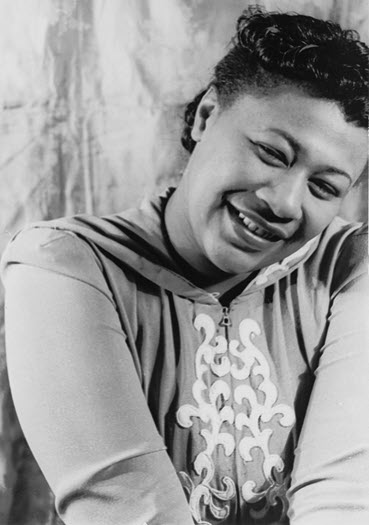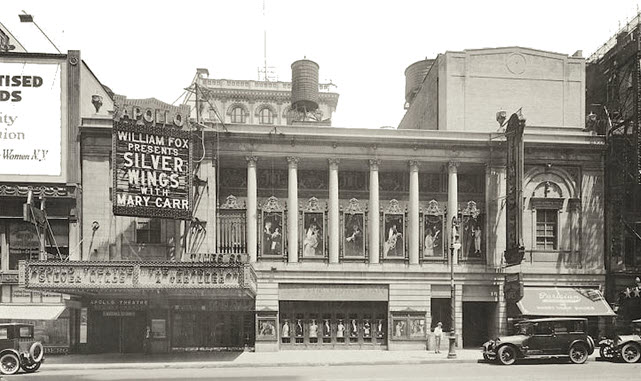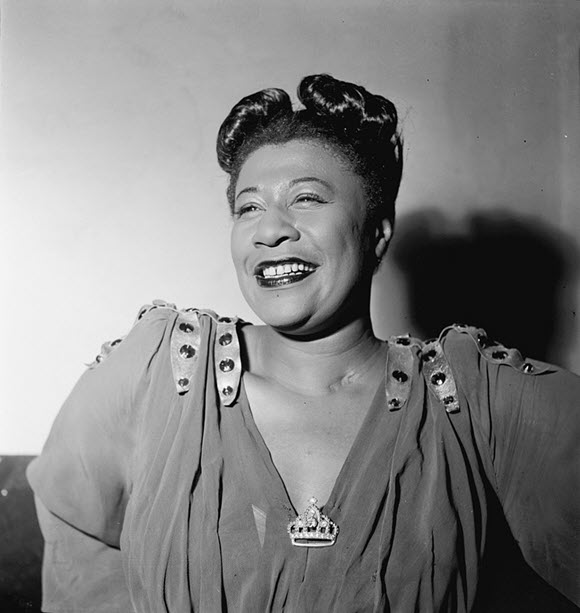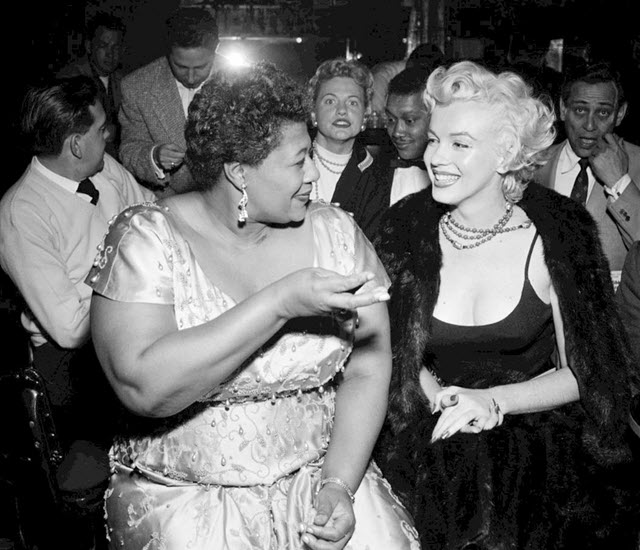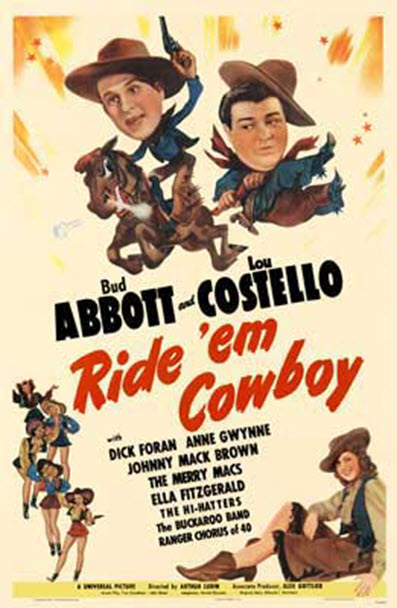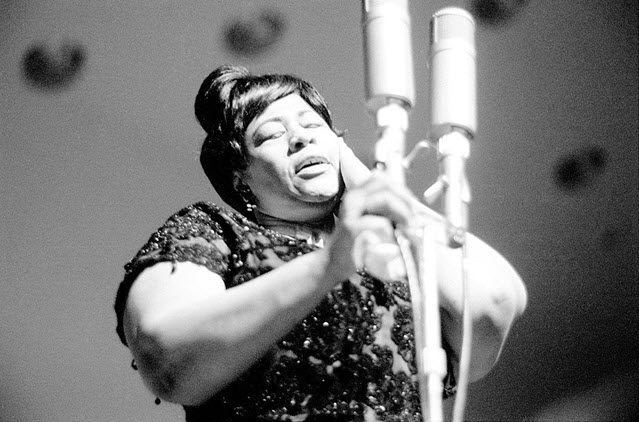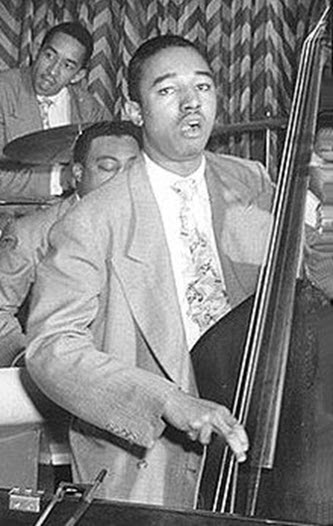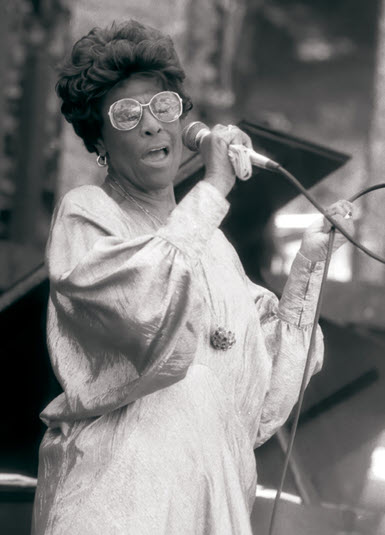Queen of Jazz, Ella Fitzgerald, was one of the legendary jazz singers. She was known and admired for her sophisticated melody, impeccable diction, timing, and purity of tone.
Thirteen Grammy awards winner Ella ruled mid-20th-century pop music for nearly six decades. She has worked alongside Jazz legends from Duke Ellington, Miles Davis, to Louis Armstrong. She was the last of the four greatest female jazz singers, including Billie Holiday, Sarah Vaughan, and Carmen McRae.
As renowned and celebrated as Ella Fitzgerald was, she had some real rough patches in life. She was losing both her parents, struggles in school, her ties to the criminal world, deeply rooted racism being some of them.
However, she miraculously overcame those dark parts of herself and became one of the most influential and revolutionary jazz artists in history.
I have dug up top 10 facts about the phenomenal performer, Ella Fitzgerald, that not everybody knows of in this article.
10. Ella Fitzgerald had a tragic early life
Ella was born on April 25, 1917, in Newport News, Virginia, to her father, William Fitgerald, and mother, Tempie Henry. William and Tempie were not married until she was about two and a half years old.
Her parents parted their ways in the early 1920s. She moved with her mother Tempie’s new partner, Joseph da SIlva to Yonkers, New York.
Joseph was a Portuguese Immigrant. He was a part-time chauffeur and dug ditches to provide for his family.
Tempie supported him by catering and working at a laundromat. Ella also used to help her parents with money by working as a runner for local gamblers.
By 1925, she lived with her mother and stepfather and her two-year-old half-sister Frances da Silva in a poor Italian area.
The real tragedy began in 1932 when her mother died in a car accident. After the passing of Ella’s mother, the real face of Joseph started to unmask.
Joseph began to assault his fifteen-year-old step-daughter. The ill-treatment of their stepfather made Ella escape from home to her aunt’s in Harlem in 1933.
Aunt Virginia did agree to take her in but struggled to support her.
Shortly after, Ella lost what remained of her family. Her stepfather Joseph passed away from a heart attack.
The poor girl was orphaned, alone, and broke during the height of the great depression.
9. A rough beginning made Ella a strong person
The tragic demise of both of her parents hit Ella hard, not only emotionally but also financially. Amid the great depression, she had no place to go.
It was all her, no one to turn to amongst the cruel racist world. That’s when her life took a dark turn.
Shortly after moving in with aunt Virginia, her excellent grades began to drop drastically, and she often skipped school. Troubled and unhappy, Ella started to look for a brothel.
Her song “working as a runner for local gamblers” turned into a numbers-runner for a mafia gang.
Because of her ties with the criminal world, she was custody and sent to Colored Orphan Asylum in Riverdale.
Later on, to a reformatory school in Albany known for its unpleasant conditions. Life there became even more unbearable and darker for Ella.
According to The New York Times, she was held in the basement of one of the cottages and given only bread and water.
It is also reported that she was tortured and routinely beaten by the male caretakers of the school.
Ella tried to join the school choir to make the best of the worst. But it only added more to her misery and disappointment as they banned her from entering choir because of her race.
Ella eventually escaped from the reformatory and started to dance on 125th Street in New York, living a hand-to-mouth life and sleeping in the street. She was already an orphan, runaway, and homeless girl in her teenage years, performing and begging for food.
8. An unexpected change of plan decided Ella’s fate
In 1934, Ella put her name in for a lucky draw to perform in Amateur Talent Night at Apollo Theatre. Her name was pulled in to her surprise, allowing her to compete for the first time.
Originally, Ella had planned to dance, but after watching the show-closing dance performance of the Edward Sisters, she decided to sing.
“When I got up there, somebody hollered up in the audience, what is she going to do?” In one of her television appearances, Ella said, as mentioned in the documentary Ella Fitzgerald – Something To Live For.
An unexpected and instant change of plan proved to be the most crucial turning point and a significant breakthrough for Ella Fitzgerald. Her rendition of “Judy” and “The Object of My Affection” left the booing crowd in awe, making her the ultimate winner of the competition.
7. Ella rose from a homeless girl to a star
Impressed with Ella’s stunning talent, saxophonist and arranger Benny Carter started introducing her to people in the music industry. He helped her find people who could help her launch her career. The pair eventually went on to be life-long friends.
The exposure also got her to meet Chick Webb, the drummer, and bandleader of one of the dominant big bands of the swing era. After some trial gigs, Webb hired her for $12.25 a week.
Ella recorded several songs with the band, including “Love And Kisses” and “You’ll Have To Swing It.” But she gained real public acclaim with her 1938 version of the nursery rhyme “A-Tisket, A-Tasket,” which she co-wrote with Webb.
Ella’s version of A-Tisket, A-Tasket, made a grand sale of one million copies, making the record of “biggest selling of the decade.”
Unfortunately, Chick Webb died of tuberculosis in 1939, leaving Ella to lead the band. Ella did not only lose a friend but a father figure as well.
She was devastated but managed to keep the band in one piece.
The band was renamed Ella and Her Famous Orchestra, and they went on to record nearly 150 songs before it was dissolved in 1942.
6. Ella challenged prejudiced judgmentalism and discrimination
Judgment and discrimination are almost inevitable parts of the world. So, despite her undeniable talent, Ella was constantly judged and discriminated against by her fans.
Ella Fitzgerald was an artist from when racial discrimination was at its peak. And reportedly, she did not meet the “beauty standard” of the 1900s.
According to the report, even Chick Webb did not want her in his band because of her looks. Living the life of a homeless teenage girl, looks weren’t the best bait for Ella.
Her low-profile dressing-up sense, scruffy hair, and big eyeglasses were not exactly appealing to Webb.
To get Ella into the band, her arranger Charles Linton reportedly threatened Webb’s manager Charlie Buchanan to quit the job if he refused to listen to her.
Even after being a big star, Ella faced racial discrimination.
Like other artists, Ella volunteered performances for the United Service Organization in World War II. During her time volunteering, she faced barbaric racial discrimination.
Despite the slogan equality in their policies, only 109 out of the total 3000 USO clubs staffed by white volunteers would staff black volunteers too. She wasn’t only restricted in clubs, hotels, and public transportation options were too very limited for her.
The racial discrimination took an intense turn when police arrested Ella Fitzgerald from her dressing room, along with Dizzy Gillespie, Illinois Jacquet, and Norman Granz for shooting dice.
Nevertheless, she remained strong and unshakable in the face of humiliating discrimination, inconvenient transportation, and accommodations and rose to be the “special attraction” at the USO benefit shows.
5. Ella and Marilyn’s friendship was a wholesome one
“I owe Marilyn a real debt. It was because of her that I played in Mocambo, a trendy 1950’s club”, Ella told MS, Magazine in 1972, ten years after the passing of Marilyn Monroe.
“Well, my very favorite person, and I love her as a person as well as a singer. I think she is the greatest, and that’s Ella Fitzgerald”, Marilyn Monroe once told a journalist when asked about her favorite singers.
Ella cherishes the memories with Marilyn even after ten whole years of her death, and Marilyn publicly commenting that Ella is her very favorite person establishes a beautiful portrayal of their friendship.
Ella and Marilyn’s friendship was not only based on stardom, but they had a deeper connection. Their friendship defied the prejudiced racial intolerance and thrived beyond the odds.
Ella and Marilyn had a profound connection. It is believed that the foundation of their friendship was shared childhood trauma. Both Ella and Marilyn had faced sexual abuse. Her stepfather had assaulted Ella as a teenager, and Marilyn had been raped as a child. Both of them grew up in orphanages and foster care.
The most popular and loved example of their friendship is how Marilyn helped Ella boost her career by simply making a phone call to the owner of Mocambo.
When Ella wanted to perform in Mocambo, she was denied. Her race is commonly believed to be the reason for the rejection. However, it was not because of her race.
Club Mocambo was exclusively for high-profiled and fancy guests, which made the owner of Mocambo deem Ella to be not glamorous enough to perform there.
When Marilyn came to know about this, she telephoned the owner of Mocambo and convinced him to book Ella immediately. Performing in Mocambo proved to be the biggest shot of Ella’s career.
Marilyn helped Ella fight segregation and stood up for Ella whenever someone tried to mistreat her because of her skin color. Meanwhile, Ella helped Marilyn find peace in her noisy schedule through her music. In other words, Marilyn was a defendant of Ella, and Ella was a peacekeeper of Marilyn.
As they sailed over the hall of fame, both found strength and peace in each other’s friendship. “They were the very early example of what we now call Girl Power,” Geoffrey Mark, author of biography Ella, quotes.
4. Ella made appearances in movies and TV shows
To many people’s surprise, Ella was more than a singer. She was also an actress and occasional dancer.
Ella debuted as “Ruby,” a maid in the 1942 Universal Pictures’ short Ride ‘Em Cowboy, starring comedy duo Abbott and Costello. In this short, she sings her playful version of A-Tisket, A-Tasket in the bus.
Her second appearance was in the Warner Brothers 1955 movie Pete Kelly’s Blue. Despite limited screen time, her cameo as nightclub singer Maggie Jackson became a big hit.
About Ella’s cameo in Pete Kelly’s Blue, a reviewer wrote, “take the fleeting scenes when the wonderful Ella Fitzgerald, allotted a few spoken lines, fills the screen and soundtrack with her strong mobile features and voice.”
St Louis Blues(1958), Let No Man Write My Epitaph(1960) are the other movies Ella played a part in. She also made guest appearances in numerous other television shows, including The Frank Sinatra Show, The Carol Burnett Show, The Andy William Show, alongside Nat King Cole, Dean Martin, and Mel Tormé.
3. Scat Singing Was Ella’s Signature
Scat singing is a vocational improvisation made by using wordless syllabus and sounds, using the voice as an instrument rather than a speaking medium. Louis Armstrong is generally regarded as the inventor of scatting in jazz.
It was no surprise that Ella had a terrific singer with great tone and timing. What distinguished her more was how she admired the horn players and approached the melodious tune made by singing just like it.
While other singers looked up to other great singers for inspiration, Ella admired Lester Young, Ben Webster, and Dizzy Gillespie.
Blessed with melodic aptitude, Ella rose in scat, singing with her silk-like and magical tone. Before anyone came to their senses, she was already a more energetic scat singer than great Louis himself, earning her scat singing as a signature.
2. An unsuccessful marital life
Ella’s personal life was not as successful as her professional life, and she was reported to marry twice and rumored to have married a third time.
In 1941, shortly after Chick Webb passed away, Ella married Benny Kornegay, a convicted drug dealer and local dockworker known for petty thefts and drug dealing.
Everyone expects fulfillment, stability, and embracement in marriage, but unfortunately, Ella’s first marriage was not stable, fulfilling one. Benny was not a partner Ella had expected. After all, he was a thief and drug dealer who spent most of his time serving in prison for drug charges.
Reportedly, Ella did not know much about Benny’s background before marriage. She had wished for a happy family with a loving, supporting husband, but to her disappointment, she supposedly meant nothing but a paycheck to him.
Encouraged and supported by her bandmates, Ella decided to annul the marriage in 1942, just a year later.
Five years later, in late 1947, Ella married Ray Brown, a bass player of Dizzy Gillespie. The couple fell in love while Ella was touring with Dizzy’s band in 1946.
Together, Ella and Ray adopted a child born to Ella’s half-sister, Frances, whom they named Ray Jr. It was a great marriage, just like Ella had wished for before. The two loved each other and understood and supported their love and passion for music for their career.
But the happiness did not last, and their career ultimately drove them away. Thanks to Ella’s relentless tour schedule, Ray Jr. was heavily looked after by aunt Virginia, and eventually, the family would fall apart.
“It was a good marriage, but it’s hard for two people in show business,” Ella later recalled.
1. A painful demise of Ella
In many ways, Ella put her career before anything else, even before her health. After three long decades of road touring, her health began to drop rapidly.
In the early 1970s, she suffered from eye hemorrhage and even had her eye cataract removed.
According to the LA Times, Ella underwent quintuple bypass surgery and broke for nine months, then resumed work occasionally.
In 1993, Ella’s legs were unfortunately amputated below the knees because of stemming diabetes, and on June 15, 1996, she tragically passed away at the age of 79.
The spokesperson did not reveal the cause of death, but years-long diabetes is reportedly considered the cause.
According to CNN, Ella Fitzgerald died peacefully in her home, surrounded by family and friends.
Conclusion
Jazz, swing, and bebop legend Ella Fitzgerald is the diamond of jazz music. She is one of the most outstanding, strong women the world has ever introduced us to. Without her perfectly perfected melodies, jazz probably would not have been the jazz we know and love today.


